Overview
Scott #289 belongs to the 1898 Trans-Mississippi Exposition Issue, a commemorative series produced to coincide with the exposition in Omaha, Nebraska. The series highlighted themes of expansion, agriculture, and frontier life, with each denomination dedicated to a different representation of the western United States.
The 8-cent value depicted military protection for settlers, reflecting both the challenges and logistical structures of westward migration. This denomination was designed for more specialized postal needs, complementing the lower-value stamps intended for routine domestic letters.
Within the broader series, Scott #289 holds significance for its portrayal of military presence in the development of western routes, aligning with the exposition’s goal of documenting the nation’s progress.
Design & Print
The Bureau of Engraving and Printing carried out production of Scott #289 in 1898. The stamp was printed in violet brown ink, a color assignment that distinguished it clearly from other denominations in the set. The design, titled “Troops Guarding Wagon Train,” portrays soldiers on horseback escorting a covered wagon caravan, symbolizing the military’s role in ensuring safe passage for settlers.
The frame bears the standard inscriptions used across the series, with “United States of America” at the top and “Eight Cents” spelled out at the bottom. Production quantities were aligned with postal demand for the 8-cent rate, though the value represented a less frequently used denomination compared with the more common 2-cent and 5-cent stamps.
The Bureau’s engravers employed detailed linework to capture both the figures and the movement of the caravan, consistent with the technical precision associated with the Trans-Mississippi series.
Postal Usage
At the time of issuance, the 8-cent denomination was used for specific rate categories rather than general domestic correspondence. It served efficiently for international mail combinations, particularly in cases where multiple-weight letters or special services exceeded the 5-cent UPU base rate.
Domestically, the 8-cent value was suitable for covers requiring additional services such as registration when paired with standard postage, or for heavier parcels where fractional rates demanded higher denominations. The existence of an 8-cent stamp within the series reflected the postal administration’s commitment to providing a complete set of values that corresponded precisely to the postal rate structure in force in 1898.
Identification
Scott #289 can be identified by its violet brown color and its distinctive vignette of troops accompanying a wagon train. The perforation is gauge 12, consistent with other Bureau issues of the period, and the design follows the standard horizontal format of the Trans-Mississippi series.
The denomination is spelled out as “Eight Cents,” placed in the bottom tablet, which prevents confusion with values expressed numerically in other U.S. issues outside this set. The intricate engraving of mounted troops and the wagons is unique to this denomination, providing clear separation from other stamps in the series. Specialists rely on the fine detail of the cavalry figures, the shading in the wagon covers, and the clarity of the frame inscriptions as confirmation of authenticity.
When compared with other values in the series, Scott #289 is distinct not only in subject matter but also in coloration, making it readily identifiable to those familiar with the Trans-Mississippi set.
It’s design was reissued in 1998 commemorating the 100 year anniversary of the Trans-Mississippi stamp set. The 1998 issue can be distinguished by it’s bi-color printing where the vignette is black, versus the 1898 issue was printed in one color.

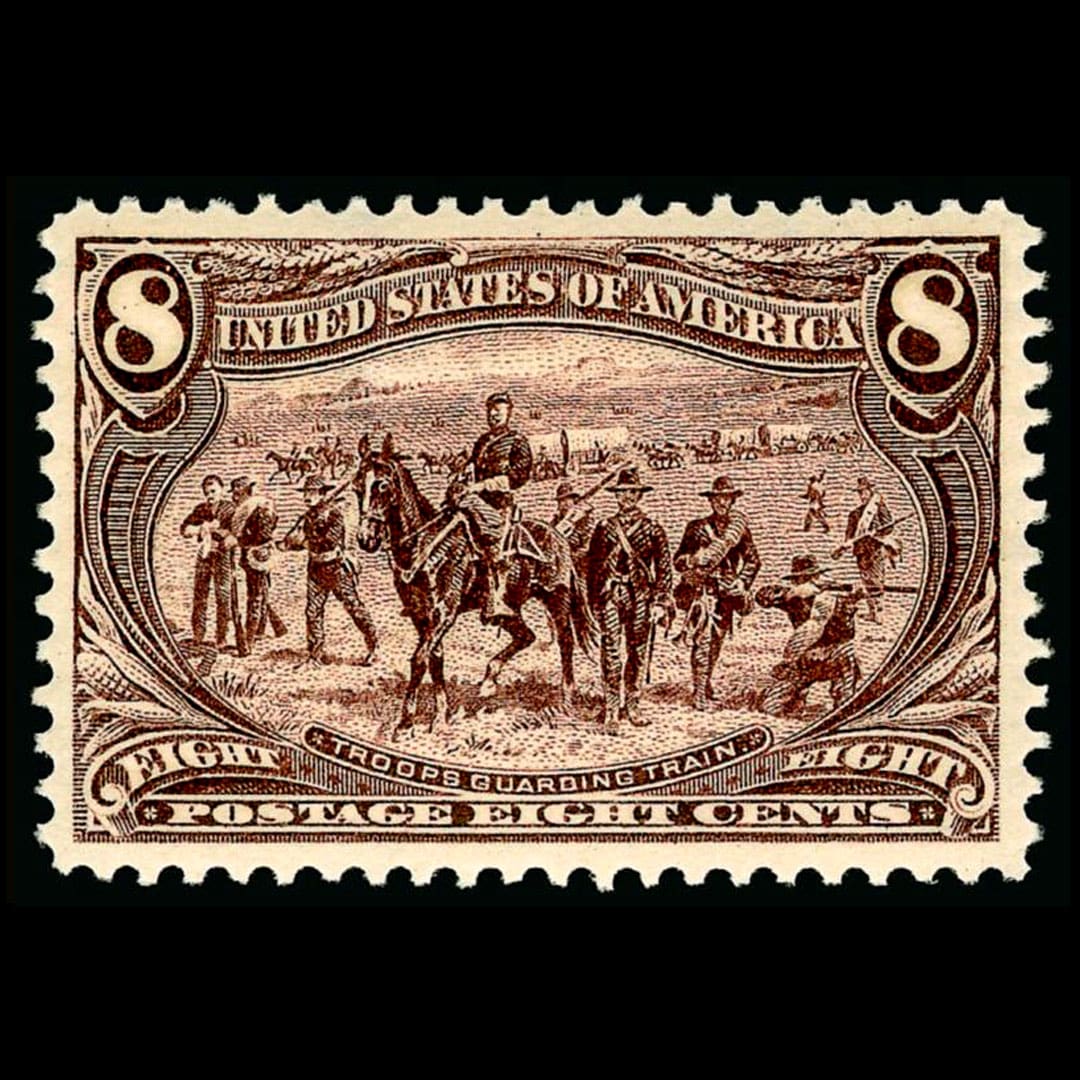

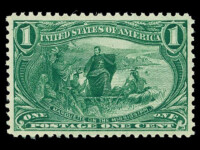
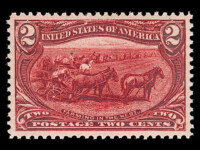



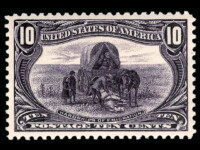

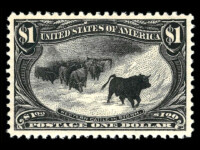













Ask A Question Or Leave A Comment